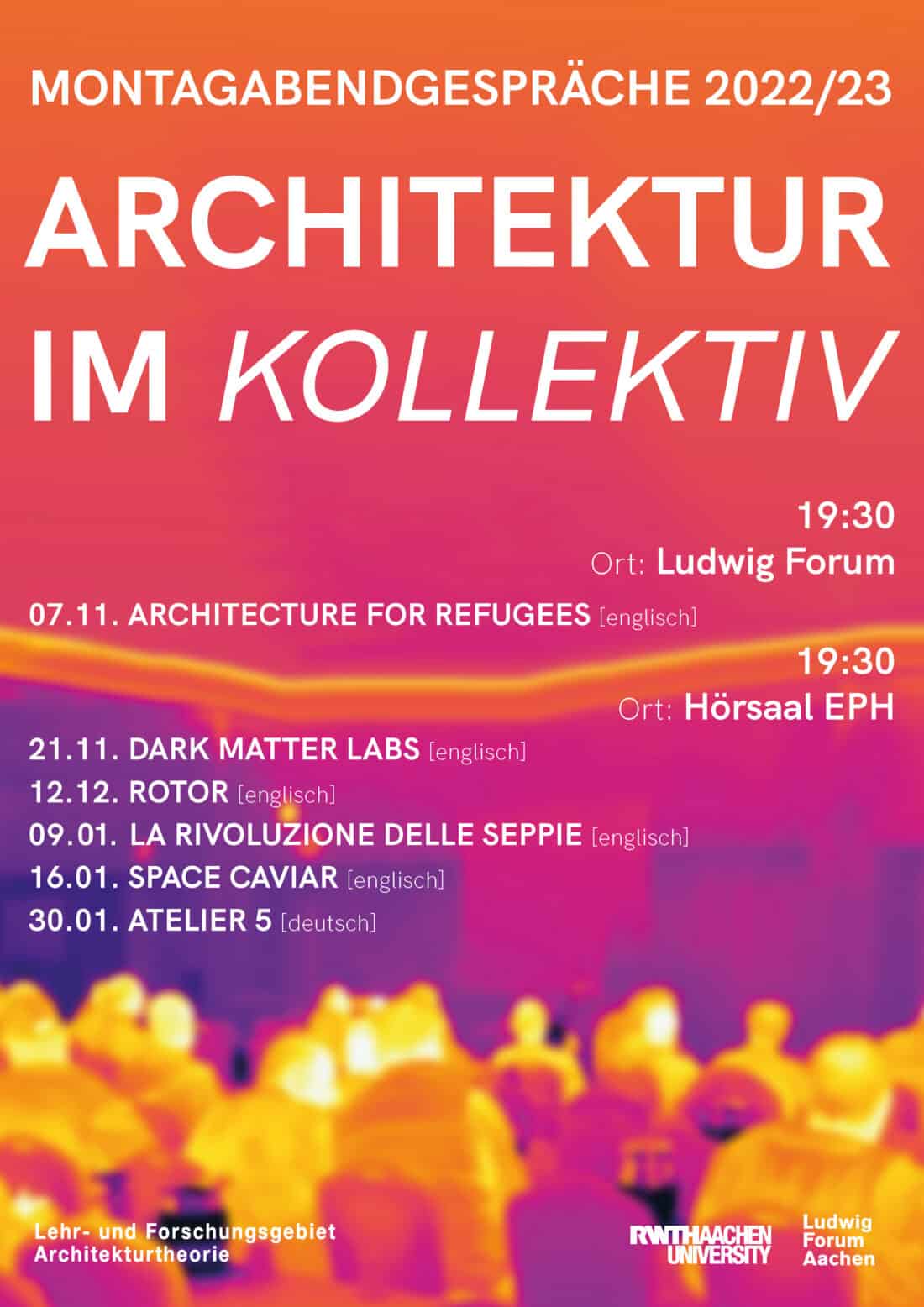Modul Master GUT 1a complementary to Montagabendgespräche 2022/23: Architektur im Kollektiv
In the coming winter semester, we will continue our lecture and discussion series, which for more than four decades has stimulated reflection on current issues in architecture. This time, the series focuses on the concept of the “collective”. We ask: How do the collectives of architecture come into being? How do they become capable of acting? And what keeps them together? Elective affinities, cooperations and alliances are, we assume, conditions for innovative architecture of the present. As a small society within a larger one, the collective has its own orders and goals. Joining a collective usually involves a commitment to shared values, proven processes and available roles. The speakers in the series will give us insights into their particular world of work and discuss community, co-determination, decision-making and shared responsibility with us. The spectrum of lectures and talks offers answers to an eminently political question: what makes architecture a collective endeavour?
In the forthcoming winter term, we will continue our series for lectures and debates, which, for more than four decades, has stimulated reflection on current issues in architecture. This time, the series focuses on the concept of the “collective”. We ask: How do collectives of architecture come into being? How do they become capable of acting? And what holds them together? We assume that elective affinities, cooperations and alliances are conditions for innovative contemporary architecture. As a small society within a larger one, the collective has its own orders and goals. Joining a collective usually involves a commitment to shared values, established processes and available roles. The speakers in the series will give us insights into their particular world of work and discuss community, co-determination, decision-making and shared responsibility with us. The spectrum of lectures and talks offers answers to an eminently political question: What makes architecture a collective endeavour?

